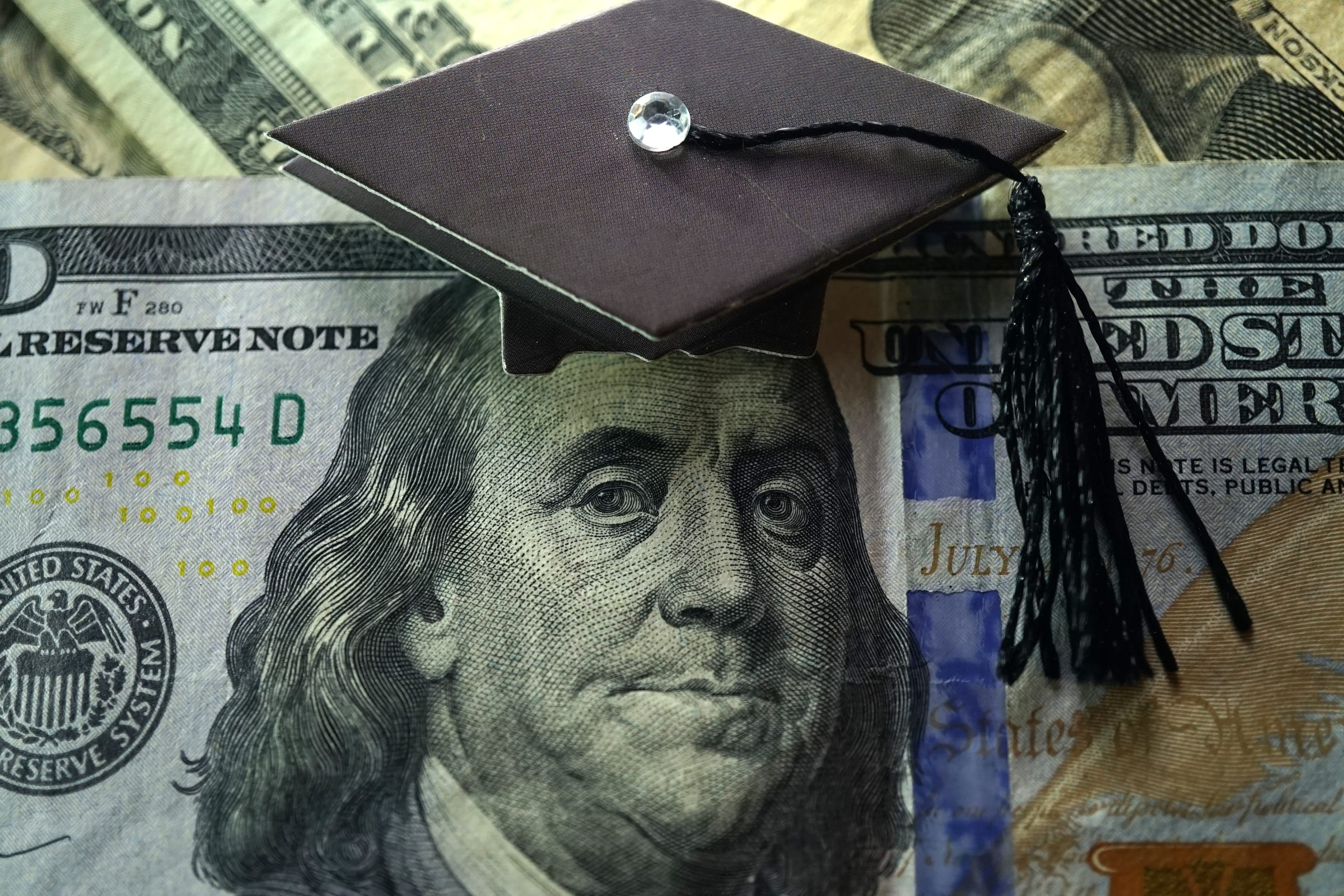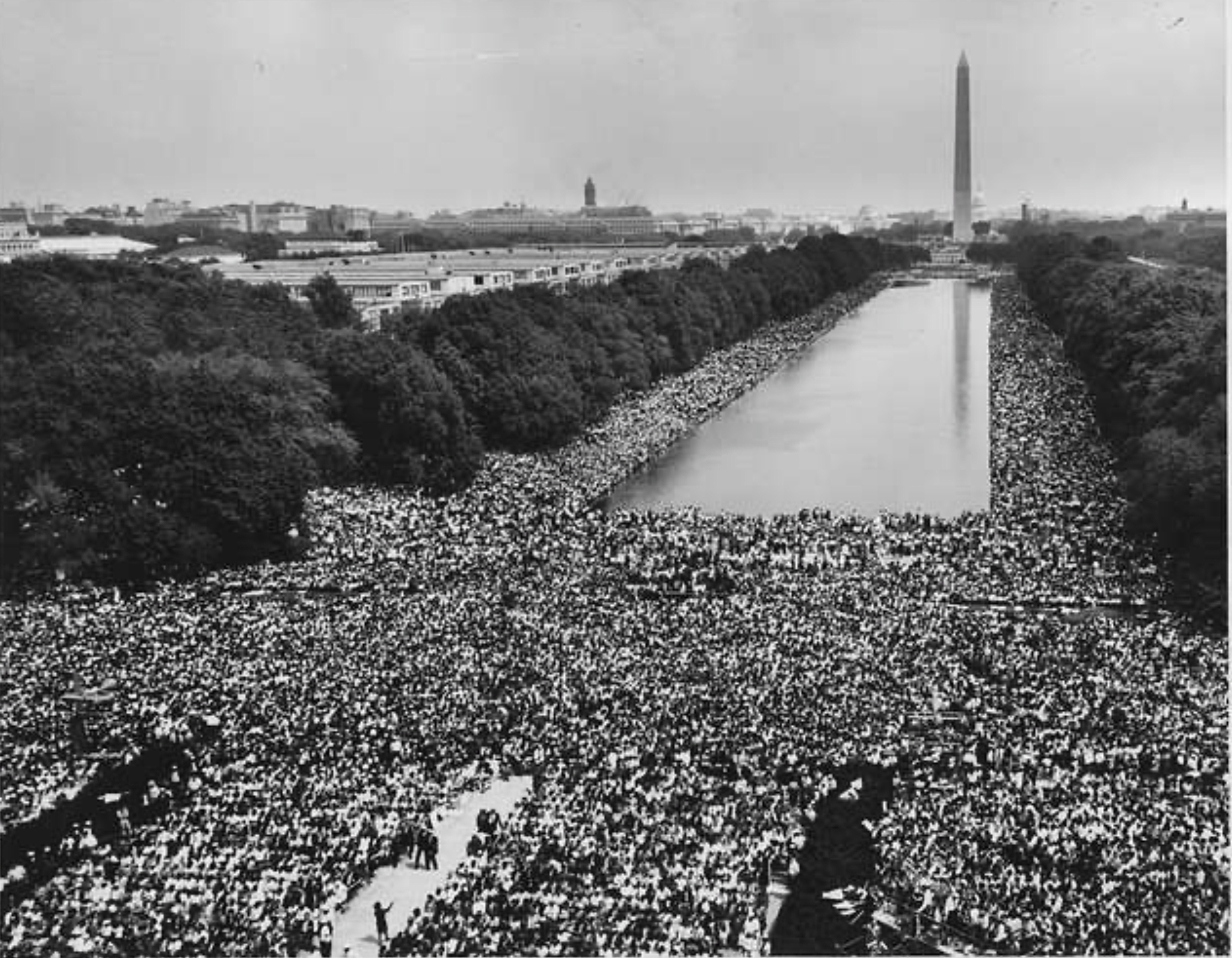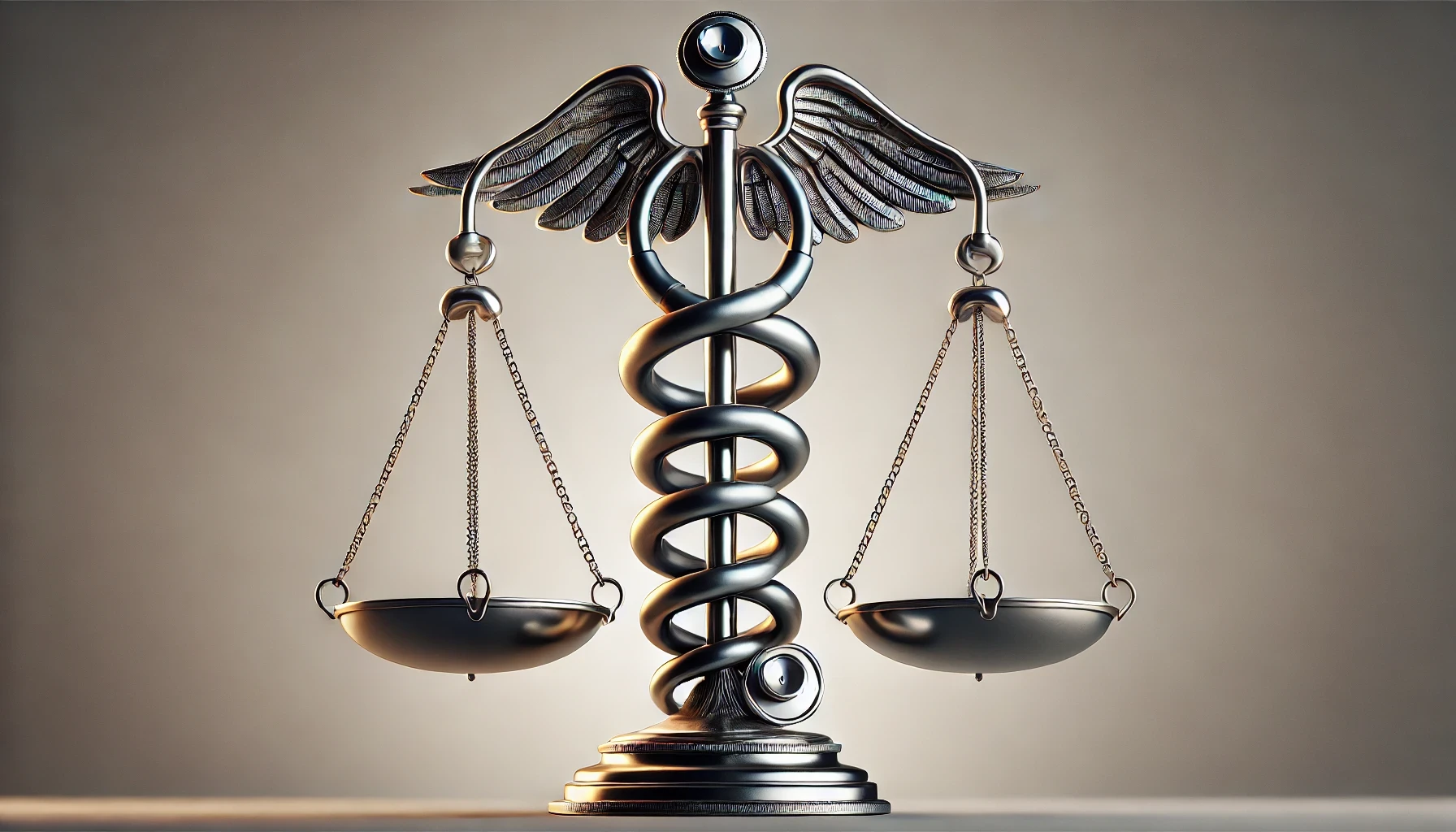
Biden Admin Unveils New Student Debt Forgiveness Plan
How do you feel about Biden's new plan?
Updated April 8, 2024, 4:30 p.m. EST
- The Biden administration revealed a new plan to erase student debt for millions of Americans. If the new plan is passed, over 30 million borrowers could have all or some of their debt forgiven.
- Biden's plan amends an earlier version that the Supreme Court rejected in June of last year. It offers relief to specific groups of borrowers, including those who have carried debt for over 20 years, those facing economic hardship, those already eligible for loan forgiveness or discharge programs but haven't applied, and those who owe more money than they did at the start of their repayment. Many borrowers could be relieved of high interest balances, regardless of income.
- This new plan could fulfill promises the president made to voters during his campaign in 2020. U.S. Education Secretary Miguel Cardona said the new proposal would mean "freedom from feeling like your student loan bills compete with basic needs like grocery or health care."
Updated July 17, 2023
- Just over two weeks after the Supreme Court struck down Biden's plan to cancel over $400 billion in student loan debt, his administration wiped out nearly $40 billion for over 800,000 borrowers.
- The debt was canceled for borrowers with more than 20 years worth of outstanding payments. The Department of Education said students will be notified if their loans were discharged in the coming weeks.
- The move technically fixed administrative errors, as some payments did not count toward the total student loan. Secretary of Education Miguel Cardona said in a statement:
"For far too long, borrowers fell through the cracks of a broken system that failed to keep accurate track of their progress towards forgiveness."
Updated June 30, 2023
- In a 6-3 decision, the Supreme Court rejected President Biden's plan to cancel over $400 billion in student loan debt. The conservative supermajority claimed Biden's plan overstepped the powers of the Education Department.
- Nearly 26 million borrowers applied to have a part of their student loan debt erased. Sixteen million applications had been approved already.
- White House officials said Biden would denounce the court's ruling in remarks later on Friday. He is expected to "announce new actions to protect student loan borrowers."
- Student loan payments will resume in the fall for millions of borrowers.
Updated May 30, 2023
- President Joe Biden and Speaker of the House Kevin McCarthy came to a deal to avoid a debt default, which would impact millions of Americans with student debt.
- After the yearslong pause, the agreed-upon legislation to raise the debt ceiling includes a provision requiring borrowers to repay their loans again by the end of the summer. If the bill passes, which it is expected to, Biden will be unable to issue any more last-minute extensions to the student debt payment pause.
- The legislation does not impact Biden's plan to forgive up to $20,000 in debt, which the Supreme Court is reviewing. A ruling from the court is expected in June.
Updated December 2, 2022
- The U.S. Supreme Court will review the legality of President Biden's student debt relief plan.
- Oral arguments will begin in February, with a decision expected in June.
- The program will remain frozen until the case is heard. White House Press Secretary Karine Jean-Pierre said that the U.S. Department of Justice will keep applicants' information on file so the program can continue "once we prevail in court."
Updated November 15, 2022
- On Monday, Nov. 14, the 8th Circuit Court of Appeals in St. Louis issued a nationwide order temporarily barring Biden's student loan relief plans, putting the program in legal limbo.
- The federal appeals court's ruling came after six states — Nebraska, Missouri, Arkansas, Iowa, Kansas, and South Carolina — claimed that the debt relief plan threatens their future tax revenues and circumvents congressional authority.
- The Biden administration could ask the Supreme Court to lift the order. White House Press Secretary Karine Jean-Pierre said:
"We are confident in our legal authority for the student debt relief program and believe it is necessary to help borrowers most in need as they recover from the pandemic. The Administration will continue to fight these baseless lawsuits by Republican officials and special interests and will never stop fighting to support working and middle-class Americans."
Updated November 11, 2022
- On Nov. 10, a federal judge in Texas declared President Joe Biden's student loan forgiveness program to be illegal. This ruling has prompted the Department of Education (DOE) to stop accepting applications for debt relief. 26 million borrowers have already applied to the program.
- The Department of Justice (DOJ) immediately appealed to the 5th U.S. Circuit Court of Appeals, but the case will have to play out in full before the administration can offer any debt relief.
- Borrowers will now have to wait for the government's appeal to the 5th Circut Court, which could take months for a final ruling. If the court overturns the Texas court's decision, the administration can begin canceling the debt.
- Initially, the Biden administration said it would start canceling student debt in January. After this week's ruling, that timeline is now in jeopardy.
Updated October 17, 2022
- On Oct. 14, the U.S. Education Department released a beta form of the application for Biden’s student loan debt cancellation. Borrowers can apply during this testing period to allow the department to determine if the application needs any fixing before the official launch.
- You can apply here, and your application will be processed when the official site launches. Resubmission will not be necessary.
- The official application will be released later this month.
Updated October 13, 2022
- On Tuesday, Biden's senior administration officials announced that the debt relief application will be available sometime this October through Dec. 31, 2023.
- The application will be live on a Government website in English and Spanish.
- To fill out the application, you will need only basic information, including name, birth date, Social Security number, phone number, and e-mail address. Applicants will not need to upload any documents, their tax records, or their Federal Student Aid ID login.
- Rather than providing documentation that a borrower earned less than $125,000, they will check a box to certify under penalty of perjury that all application information is valid.
- A senior administration official said borrowers would see their debts canceled weeks after filling out the application.
- The White House released a preview of the student-loan forgiveness application:
Student Debt Relief Update:
— The White House (@WhiteHouse) October 11, 2022
Today, the U.S. Department of Education is previewing the student debt relief application form. Here’s the latest: pic.twitter.com/efSzRbions
Updated September 14, 2022
- A letter signed by 22 Republican governors is calling for President Joe Biden to withdraw his student loan forgiveness plan, claiming it would harm low-income families, encourage more student borrowing, incentivize higher tuition rates, and drive up inflation.
- The group includes Texas Gov. Greg Abbott, Florida Gov. Ron DeSantis, and Iowa Gov. Kim Reynolds, who wrote:
“Only 16-17 percent of Americans have federal student loan debt, and yet, your plan will require their debts be redistributed and paid by the vast majority of taxpayers. Shifting the burden of debt from the wealthy to working Americans has a regressive impact that harms lower income families…hourly workers will pay off the master’s and doctorate degrees of high salaried lawyers, doctors, and professors...Simply put, your plan rewards the rich and punishes the poor.”
- The White House has said that 90% of those who will benefit from the program earn less than $75,000 a year, with spokesperson Abdullah Hasan writing in response to the letter:
“These same Republican governors didn’t seem to object when their Republican colleagues in Congress passed a $2 trillion tax giveaway for the rich or had hundreds of thousands of dollars of their own small business loans forgiven…While Republican elected officials try to keep working middle-class Americans in mountains of debt, President Biden is committed to delivering relief to the borrowers who need it most.”
Updated September 2, 2022
- North Carolina will consider Biden's student loan forgiveness taxable income, according to the state's Department of Revenue. While the administration's plan is exempt from federal tax, individual state taxes are still at play.
- The state can tax this relief because it did not fully adopt a specific Section of the Internal Revenue Code, which exempts student loan forgiveness from tax as part of the American Rescue Plan Act.
- Mississippi has confirmed it will also tax residents' forgiven student loan debt. 13 states are able to follow suit, and the Tax Foundation projects that Arkansas, Minnesota, and Wisconsin may do the same.
What’s the story?
- President Biden announced that he is canceling $10,000 in student loan debt for borrowers that earn less than $125,000 per year. Millions of Americans anticipated the announcement as Biden’s campaign promised this economic relief for months.
- Students who received the low-income loans known as Pell grants throughout their education will be eligible for $20,000 in debt forgiveness. Biden also extended the pandemic pause on loan payments until the end of the year.
- Many were unsure of the potential for debt forgiveness from the Biden administration because of the fears that it would exacerbate inflation before the midterm elections. The White House addressed those concerns by limiting loan relief to only individual borrowers who earn less than $125,000 or households earning less than $250,000 a year. The Biden administration declared that 90% of relief will go to households that make $75,000 or less a year.
- Biden also proposed changes to the repayment systems, which would cut many borrowers’ bills monthly. Through the Education Department, Biden hopes to cap undergraduates’ loans at 5% of their discretionary monthly income. The current plans cap payments at 10% of a borrower’s income. Biden also seeks to have the government cover the monthly interest payments.
- The timing of the relief is still uncertain. Many expect the plan to face legal challenges, mainly because Biden used executive action rather than legislation to forgive the loans.
What they’re saying
- Jason Furman, Harvard economist and economist for former President Obama, said:
“[The plan] would unnecessarily provide tens of thousands of dollars to many high-income households in a way that goes well beyond even what he promised in the heat of a Democratic primary when the problem facing the country was low inflation — not high inflation.”
- Sen. Elizabeth Warren (D-MA) praised Biden’s plan but will push for more debt forgiveness. She said:
“No president in history has reached so directly into the lives of so many millions of working people and said, ‘You invested in yourself to get an education, and the rest of the country wants to help you with that.’”
- Sen. Ben Sasse (R-NE) said:
“[The plan] forces blue-collar workers to subsidize white-collar graduate students. Instead of demanding accountability from an underperforming higher-education sector that pushes so many young Americans into massive debt, the administration’s unilateral plan baptizes a broken system.”
- While announcing the plan at the White House, Biden said:
"It's about opportunity, it's about giving people a fair shot, and it's about the one word America can be defied by -- possibilities."
Political response
- Many are waiting to see how Biden’s plan will impact the midterm elections. Republicans are hoping to flip the House and the Senate this fall, and using the student debt controversy to their advantage. Some argue that low-income taxpayers who did not go to college — and have no student debt — will end up subsidizing those who have a degree and stand to earn more over their lifetime.
- Furman covered the potential impact the plan may have on inflation in a Twitter thread, saying that debt forgiveness is like dumping gasoline on a burning fire. Biden rejected claims that the plan could hike inflation.
- Some say the plan could increase turnout among young voters who are facing the burden of student debt this fall.
The big picture: Debt in the U.S.
- 48 million people owe a total of $1.75 trillion in student loan debt — the second highest consumer debt after mortgages.
- Many Democrats argue that debt forgiveness is necessary to address the wealth gap in the nation. Progressive groups believe that addressing economic racial inequality would require forgiving $50,000 in debt since many reports show that nonwhite borrowers have a higher average loan balance than their white counterparts.
- Education experts point out that while Biden’s efforts will ease the lives and financial strain of many borrowers, it does not address the fundamental problem of the high cost of education in America.
How do you feel about Biden's new plan?
-Jamie Epstein, Casey Dawson
(Photo credit: iStock/Kameleon007)
The Latest
-
 Changes are almost here!It's almost time for Causes bold new look—and a bigger mission. We’ve reimagined the experience to better connect people with read more...
Changes are almost here!It's almost time for Causes bold new look—and a bigger mission. We’ve reimagined the experience to better connect people with read more... -
 The Long Arc: Taking Action in Times of Change“Change does not roll in on the wheels of inevitability, but comes through continuous struggle.” Martin Luther King Jr. Today in read more... Advocacy
The Long Arc: Taking Action in Times of Change“Change does not roll in on the wheels of inevitability, but comes through continuous struggle.” Martin Luther King Jr. Today in read more... Advocacy -
 Thousands Displaced as Climate Change Fuels Wildfire Catastrophe in Los AngelesIt's been a week of unprecedented destruction in Los Angeles. So far the Palisades, Eaton and other fires have burned 35,000 read more... Environment
Thousands Displaced as Climate Change Fuels Wildfire Catastrophe in Los AngelesIt's been a week of unprecedented destruction in Los Angeles. So far the Palisades, Eaton and other fires have burned 35,000 read more... Environment -
 Puberty, Privacy, and PolicyOn December 11, the Montana Supreme Court temporarily blocked SB99 , a law that sought to ban gender-affirming care for read more... Families
Puberty, Privacy, and PolicyOn December 11, the Montana Supreme Court temporarily blocked SB99 , a law that sought to ban gender-affirming care for read more... Families
 Climate & Consumption
Climate & Consumption
 Health & Hunger
Health & Hunger
 Politics & Policy
Politics & Policy
 Safety & Security
Safety & Security
